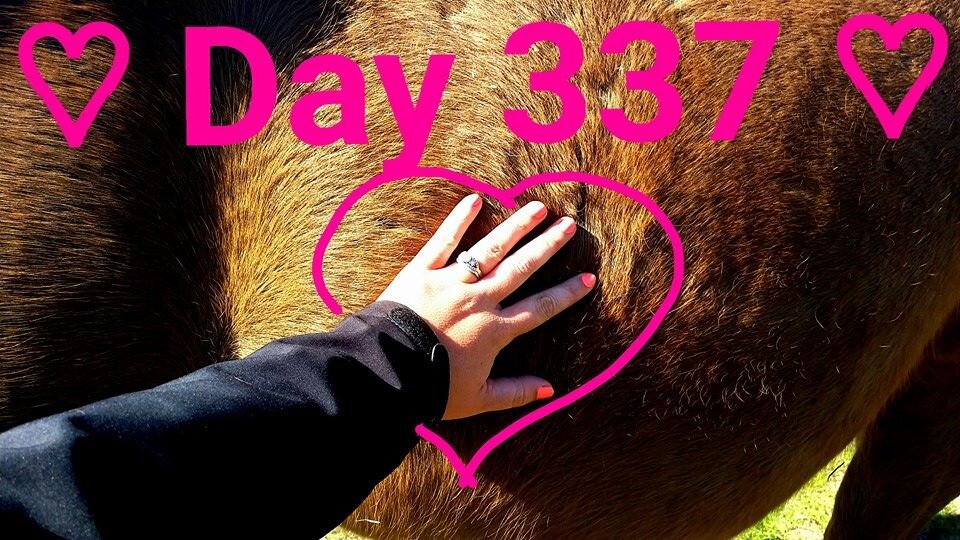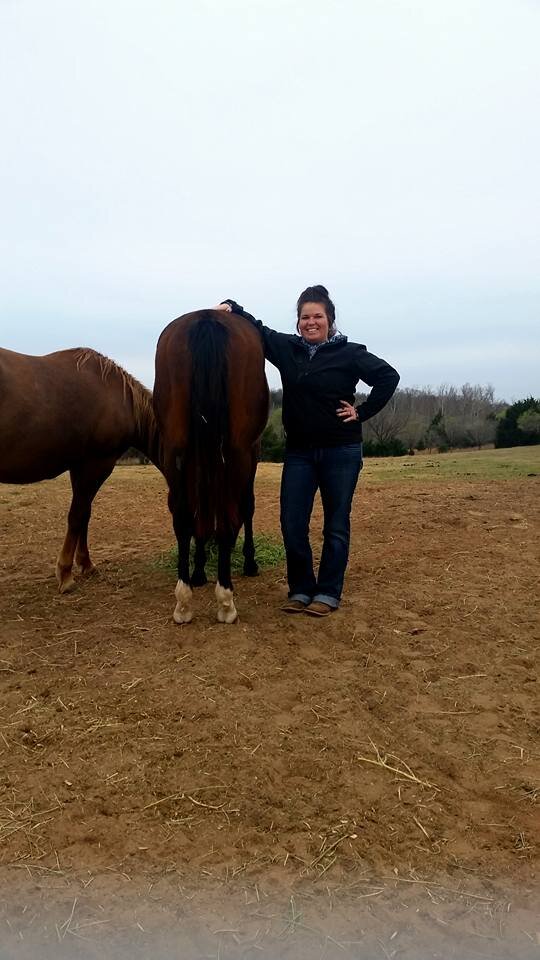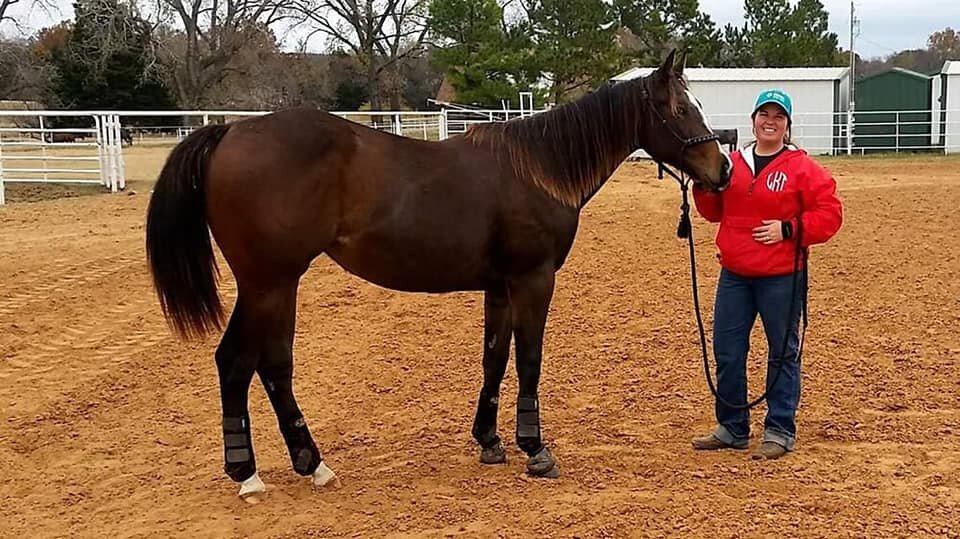Please Pray For My Horse.
Tonight I posted on my Facebook, a prayer request for my mare Smooch who, alongside my amazing veterinary staff at Oakridge equine, is fighting for her life. As I lay awake listening to every crack of thunder, every drop of rain and watch every strike of lightening dance across my bedroom ceiling I started to think how some of my friends might not really know what that means.
You see my friends there are some stark differences you must understand. The biggest and most important difference to note is the difference between someone who owns a horse and a horsemen who has a performance horse partner. To be clear, there is NOTHING wrong with either, both serve their purpose and both can be equally rewarding and gratifying. Someone who owns a horse may have it out in the pasture, it may have a name, it may be “yard art”, it may live with a herd of cows or may be by itself. The purpose of this animal is companionship and the warm-fuzzies, they love to look at them in their beauty and grace, maybe occasionally brush them and overall, they provide their owner with a sense of joy and little is required of them to do so. The simple life you might say.
But then there are those who own performance horses. These high caliber athletes are a not just our companions, they are our partners. With them we defy laws of physics, we set expectations, we push barriers, we train. For some they are the means to how we make a living, for others the hope of how we one day dream of making our living. Many of us when looking in their eyes see our identity staring back at us. It isn’t a 50/50 relationship, it’s 100/100, in order for man and beast to perform at a high level successfully we have to be all-in, dedicated, committed to the same dream, the same journey, share the same work ethic. Cody Johnson once said in a song; “if you have a dream, chase it, because a dream won’t chase you back”. Every horsemen knows no truer statement has ever been spoken, nobody can make the dreams of a horsemen happen for them. Raising and training performance horses is hard work but we also know how privileged we are to have the opportunity and honor of this “work”. You see my friends, in our world, NOBODY wins at a high level who doesn’t work for it. I’d venture to say you can’t put in the kind of effort it takes to be successful in what we do, without a God-given love in your heart because on paper, it rarely makes sense. God has so graciously given to horsemen this incredible, selfless beast of power, agility and grace, who allow us to shape them, train them and grow them into the athletes we as their “people”, know they can be.
But what does that look like? Please let me tell you more. We own 15 head of horses at Double M Performance Horses. Every day, we feed each horse in their separate feeder two times, 6am and 6pm. They are fed high quality hay that has been sprayed, fertilized, baled, purchased, hauled and stacked in our barn. They are fed high quality grain that has been planted, harvested, milled, bagged, purchased, hauled and poured into our feed bins for dispensing. The feed is top-dressed with a pro-biotic and electrolyte supplements, sometimes additional supplements are added for various purposes. Just like professional human athletes have nutritionists to help them at the top of their game, our horses have us, we research, purchase and dispense dietary supplementation at each meal to help them be their best.
15 horses, 2x a day, 365 days a year, that is 10,950 scoops of feed we scoop and deliver in a year. 50 lbs of feed per feeding, that’s 100lbs of feed per day we deliver or 36,500 lbs of feed a year. It’s not like going to gym, where you might take a rest day or a cheat day, for horsemen, that is not an option. These animals depend on us, we wake up everyday to show up for them because we know without a doubt they will show up for us. We have to maintain them at a high-level if we expect them to perform at a high level. That means a high quality, consistent diet, regular exercise, care and management. So, although someone who has a horse owns the same animal as we do, you can see, their pony that grazes leisurely in the pasture, overweight, out of shape but happy to greet you for an occasional apple, is not the same thing.
It takes a lot to make it in this business, for many that means working full time jobs while putting yourself in a position to be performance horsemen and women. Horses are expensive to own, expensive to train and expensive to compete on; however, the life lessons and skills you learn are priceless. The skillset a top trainer or competitor have are learned and honed, like any other high-level professional athlete, over time and with practice. Practicing rarely makes you money in the beginning so you have to provide for yourself and your equine partners and thus many work a full-time job away from the ranch. Riding and chores happen before the sun comes up and after it sets.
For some, caring for and practicing with their animal athletes is only icing on the cake. Insert, back up horse. If your main mount gets side-lined with an injury or illness you have 2 options, you stay home and treat them until they are well enough to “hopefully” return to competition or you treat and care for them in the same fashion while running your back up horse to stay sharp and hopefully make a little day money. The point being, most people need a back up horse. You can attain a high-quality competitive prospect or athlete one of two ways, you can buy it (be ready to dig deep into those pockets, they’re not cheap) or you can try to make it. Understand making a top prospect into a winner is rarely less expensive, the cost is simply dispersed over time instead of all at once.
I promise I’m getting to the point, bear with me a little longer. For those breeding, raising and training their own prospects the process looks like this.
1. Do your research, find a quality mare that meets your requirements
2. Repeat process for the stallion
3. Research the potential of the “cross”
4. Pay the stud fee to book your mare
5. Pay for a pre-breeding work up for your mare at the vet
6. Pay to have your bred
7. Pray your mare gets pregnant
8. If she does great! Congratulations, start your broodmare management program for the next 11 months 2 weeks. If she doesn’t repeat steps 1-7.
9. For the next 11 months keep your mare on a quality nutrition program, maintain her teeth, her feet, her vaccination schedule
10. Foaling time, monitor for signs of foaling, wake up every hour or two every night in anticipation of assisting her in case there’s trouble. Mares have a relatively low dystocia rate but when they have one, it becomes a critical emergency situation quickly
11. If you’re blessed and foal arrives happy and healthy, congrats! Wrap that sucker in bubble wrap and proceed on to step 12 (the bubble wrap is figuratively speaking of course…you pickin up what I’m throwin down?). If not, wipe your tears, hug your mare and tell her how sorry you are, repeat steps 2 -11 again, don’t worry, it’s only a year long commitment, it’ll fly by.
12. Keep the mare and foal in safe fencing, handle him/her regularly, train them to stand for the farrier, to wear a halter, to be led, to stand tied, to load in the trailer and to pony.
13. Wean the foal at 6 months, wrap it in double bubble-wrap and pray it stays sound and healthy until he/she turns two years old.
14. Now decide if you plan to send your prospect to a colt starter or if your ole bones got one more in ya. Act accordingly. You’ll likely pay one way or the other, physically or financially. Keep a sharp eye on your colt, your investment.
15. If your prospect now has a great foundation, let them grow up a bit, turn them out to be a horse awhile longer. This is the horsemen’s version of letting your horse have a childhood, free of responsibility. Continue to feed and care for them during this time, don’t forget your bubble wrap.
16. They’re 3!!! Woowhooo! The moment we’ve all been waiting for. Time to start their discipline training. Do you plan to do this yourself? Or send them off to a professional? Again…you know the deal….you’ll pay one way or the other! Remember, this is a critical time in their life, the training they receive now can set them up for greatness or failure, be sure you know which one you’re headed for
17. They are slick, shiney, well-oiled machines and are ready to start entering those futurities at 4 or 5 years old. 1 step forward, 2 steps back, red light/green light. They won a check in the 1D one day when they laid down a run, next day they hit all 3 barrels and the one by the out gate. At this point, you’re now spending the time feeding, riding and bathing them daily (or you’re paying someone who is doing this for you), furthermore, you are hauling anywhere and everywhere you can to show them the world. You are spending the money to enter them, in hopes of winning some back and more importantly getting them more consistent. That is, entry fee money, fuel money, rig purchase and maintenance money, on top of horse maintenance money…………if it hasn’t already, the commitment gets REAL, REAL FAST about now.
18. You now have a great product, you hope. You have dreams and ambitions that stretch the horizon. You work endlessly each day to make sure your partners needs are met on all accounts. You work hard and you pray hard, because we all know in our line of work it takes execution of both at a high level, every day.
Sometimes, even if you’ve done all your homework, you have worked really hard through endless hours, blood, sweat and tears to establish a strong program of healthy, proven competitors, it’s not enough. Sometimes, things happen that are out of your control, the bubble wrap fails. In these scary, raw and vulnerable moments, you thank the good Lord for your veterinary staff and you ask God to guide their team in the treatment of your hopes and dreams that’s now standing before them in the form or a sick or injured horse.
It is in these times uncertain times you plead to your friends and family to send up prayers to God on behalf of your partner because you know that God says where many gather He too is there. It is in these times where you find the mental strength to be hopeful, you try your best to block out the what-if’s and you pray that you don’t have to make the call to end the life you have dedicated the last 5 years of your life to caring for and developing.
So thank you, to all of our friends and family who join us in praying for our equine partners, I hope you now have a better understanding of what it means to “please pray for my horse” by praying for them you are truly praying for a part of us. No matter the dream, it takes a village and we are grateful you are part of ours.



















